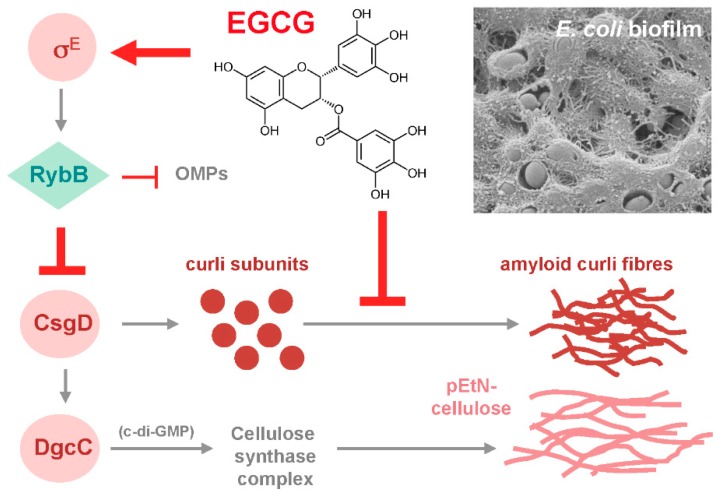Figure 2.
Summary of the mechanisms of action of EGCG on E. coli macrocolony biofilms. EGCG interferes with the production of both amyloid curli fibres and pEtN-cellulose fibril—which together form the fibrous matrix material visible in the scanning electron micrograph of the surface of an E. coli macrocolony biofilm shown in the upper right corner—by two separate but synergistically acting processes: (i) EGCG directly interferes with the formation of amyloid fibres from curli subunits; and (ii) EGCG induces the σE (RpoE)-mediated cell envelope stress response, which drives increased synthesis of the small regulatory RNA RybB, which in turn reduces the expression of CsgD as well as of many outer membrane proteins (OMPs). The biofilm regulator CsgD is required for the expression of the curli subunits as well as of DgcC, the diguanylate cyclase that produces the second messenger c-di-GMP required to activate cellulose synthase as well as the associated phosphoethanolamin (pEtN) modification system. The figure was previously published [80] under the CC-NC-ND license; © the author.

